1. Cho EJ, Yang WS. Soft tissue changes after double jaw surgery in skeletal Class III malocclusion. Korean J Orthod. 1996. 26:1–16.
2. Choe YK, Suhr CH. Hard and soft tissue changes after orthognathic surgery of mandibular prognathism. Korean J Orthod. 1993. 23:707–724.
3. Rim JS, Choi CM. A cephalometric study on the changes of soft tissue profile (upper lip & nose) following two-jaw surgery. J Korean Assoc Maxillofac Plast Reconstr Surg. 2003. 25:233–237.
4. Han UA, Kim JH, Yoon TH, Park JU, Kook YA. Hard and soft tissue profile changes following anterior subapical osteotomy in bimaxillary dentoalveolar protrusion patients. Korean J Orthod. 2003. 33:475–483.
5. Reyneke JP, Evans WG. Surgical manipulation of the occlusal plane. Int J Adult Orthodon Orthognath Surg. 1990. 5:99–110.
6. Arnett GW, Jelic JS, Kim J, Cummings DR, Beress A, Worley CM Jr, et al. Soft tissue cephalometric analysis: diagnosis and treatment planning of dentofacial deformity. Am J Orthod Dentofacial Orthop. 1999. 116:239–253.
7. Kang SG, Lee YJ, Park YG. A comparative study of soft tissue profile between Korean and Caucasian young adults under NHP. Korean J Orthod. 2003. 33:323–337.
8. Burstone CJ, James RB, Legan H, Murphy GA, Norton LA. Cephalometrics for orthognathic surgery. J Oral Surg. 1978. 36:269–277.
9. Moore JW. Variation of the sella-nasion plane and its effect on SNA and SNB. J Oral Surg. 1976. 34:24–26.
10. Stella JP, Streater MR, Epker BN, Sinn DP. Predictability of upper lip soft tissue changes with maxillary advancement. J Oral Maxillofac Surg. 1989. 47:697–703.

11. Posnick JC, Fantuzzo JJ, Orchin JD. Deliberate operative rotation of the maxillo-mandibular complex to alter the A-point to B-point relationship for enhanced facial esthetics. J Oral Maxillofac Surg. 2006. 64:1687–1695.

12. Bell WH, Dann JJ 3rd. Correction of dentofacial deformities by surgery in the anterior part of the jaws. A study of stability and soft-tissue changes. Am J Orthod. 1973. 64:162–187.

13. Dann JJ 3rd, Fonseca RJ, Bell WH. Soft tissue changes associated with total maxillary advancement: a preliminary study. J Oral Surg. 1976. 34:19–23.
14. Radney LJ, Jacobs JD. Soft-tissue changes associated with surgical total maxillary intrusion. Am J Orthod. 1981. 80:191–212.

15. Schendel SA, Eisenfeld JH, Bell WH, Epker BN. Superior repositioning of the maxilla: stability and soft tissue osseous relations. Am J Orthod. 1976. 70:663–674.

16. Chang IH, Lee YJ, Park YG. A comparative study of soft tissue changes with mandibular one jaw surgery and double jaw surgery in Class III malocclusion. Korean J Orthod. 2006. 36:63–73.
17. Enacar A, Taner T, Toroğlu S. Analysis of soft tissue profile changes associated with mandibular setback and double-jaw surgeries. Int J Adult Orthodon Orthognath Surg. 1999. 14:27–35.
18. Jensen AC, Sinclair PM, Wolford LM. Soft tissue changes associated with double jaw surgery. Am J Orthod Dentofacial Orthop. 1992. 101:266–275.

19. Mansour S, Burstone C, Legan H. An evaluation of soft-tissue changes resulting from Le Fort I maxillary surgery. Am J Orthod. 1983. 84:37–47.

20. Cha KS, Chung KR, Park JU. Park JU, editor. Diagnosis. Orthognathic surgery. 2003. Seoul: Koon Ja Publishing Inc.;3–43.
21. Kim SY, Kim SG, Lee SH, Kim SH, Chung TY, Ahn TH. Anterior segmental maxillary osteotomy using Cupar's method: preliminary study. J Korean Assoc Maxillofac Plast Reconstr Surg. 2001. 23:422–427.
22. Lew KK, Loh FC, Yeo JF, Loh HS. Profile changes following anterior subapical osteotomy in Chinese adults with bimaxillary protrusion. Int J Adult Orthodon Orthognath Surg. 1989. 4:189–196.
23. Hershey HG, Smith LH. Soft-tissue profile change associated with surgical correction of the prognathic mandible. Am J Orthod. 1974. 65:483–502.

24. Kajikawa Y. Changes in soft tissue profile after surgical correction of skeletal Class III malocclusion. J Oral Surg. 1979. 37:167–174.
25. Scheideman GB, Legan HL, Bell WH. Soft tissue changes with combined mandibular setback and advancement genioplasty. J Oral Surg. 1981. 39:505–509.
26. Suckiel JM, Kohn MW. Soft-tissue changes related to the surgical management of mandibular prognathism. Am J Orthod. 1978. 73:676–680.

27. Carlotti AE Jr, Aschaffenburg PH, Schendel SA. Facial changes associated with surgical advancement of the lip and maxilla. J Oral Maxillofac Surg. 1986. 44:593–596.

28. Ayoub AF, Mostafa YA, el-Mofty S. Soft tissue response to anterior maxillary osteotomy. Int J Adult Orthodon Orthognath Surg. 1991. 6:183–190.
29. Cohn-Stock G. Die chirurgiche Immediatregulierung der Kiefer, speziell die chirurgishce Behandlung der Prognathie. Vjschr Zahnheilk Berlin. 1921. 37:320.
30. Wassmund M. Lehrbuch der Praktischen Chirurgie des Mundes und der Kiefer. 1935. Leipzig: Meusser.
31. Wunderer S. Die prognathie operativen mittels frontal gestiertem maxilla fragment. Ost Z Stomatol. 1962. 59:98–102.
32. Park JU, Baik SH. Classification of Angle Class III malocclusion and its treatment modalities. Int J Adult Orthodon Orthognath Surg. 2001. 16:19–29.
33. Kim YJ, Kim JH. A study on the characteristics of attractive profiles of Korean young women to orthodontists. Korean J Orthod. 2001. 31:479–487.
34. Kim YJ, Nahm DS. Soft tissue cephalometric analysis of aesthetic Korean female. Korean J Orthod. 2002. 32:383–393.
35. Hwang CJ, Lim SA. A study on the postoperative stability of occlusal plane in orthognathic surgery patients depending on the difference of occlusal plane. Korean J Orthod. 1998. 28:237–253.
36. Lew KK. Orthodontic considerations in the treatment of bimaxillary protrusion with anterior subapical osteotomy. Int J Adult Orthodon Orthognath Surg. 1991. 6:113–122.
37. Jeong MH, Choi JH, Kim BH, Kim SG, Nahm DS. Soft tissue changes after double jaw rotation surgery in skeletal Class III malocclusion. J Korean Assoc Oral Maxillofac Surg. 2006. 32:559–565.
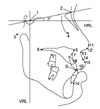

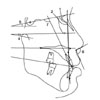


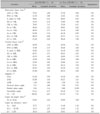
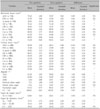
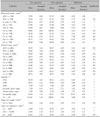
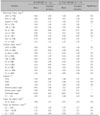






 PDF
PDF ePub
ePub Citation
Citation Print
Print



 XML Download
XML Download